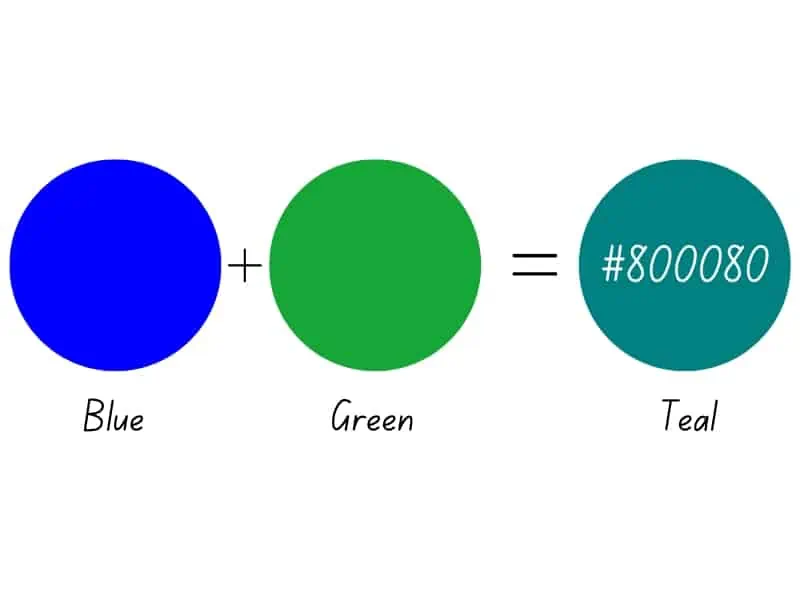We’ve all wondered at least once what color blue and green make when mixed together. The answer differs depending on the color model you work in. In short, green and blue mixed make teal. But that’s not all!
Blue and green make what color, though?
The color that blue and green make varies depending on your work environment and the type of blue and green you use in the mixture.
So, let’s see what color green and blue make when mixed.
What Color Do Blue and Green Make When Mixing Paint?
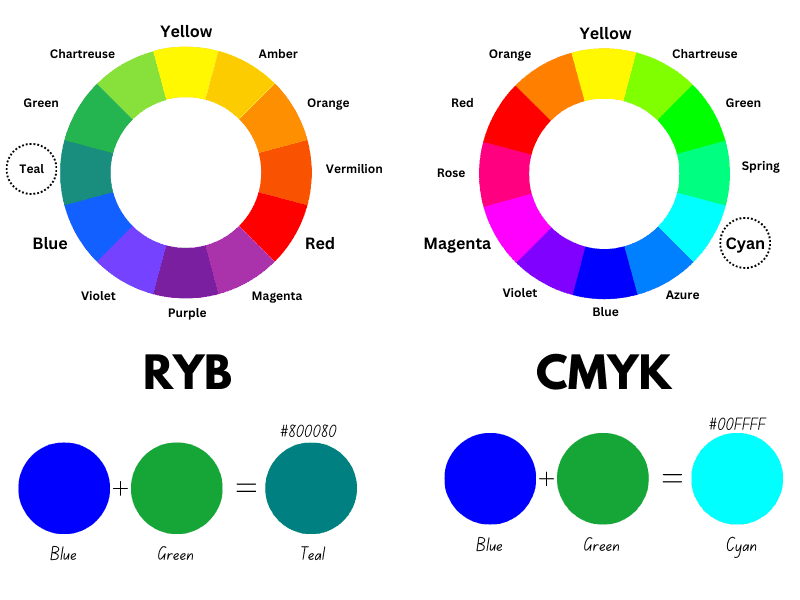
By mixing blue and green paint together, you make blue-green, known as teal – a tertiary color on the RYB color wheel.
The color blue-green is made by mixing blue and green together. Blue-green is a tertiary color, which means it is made by mixing a primary color with a secondary one.
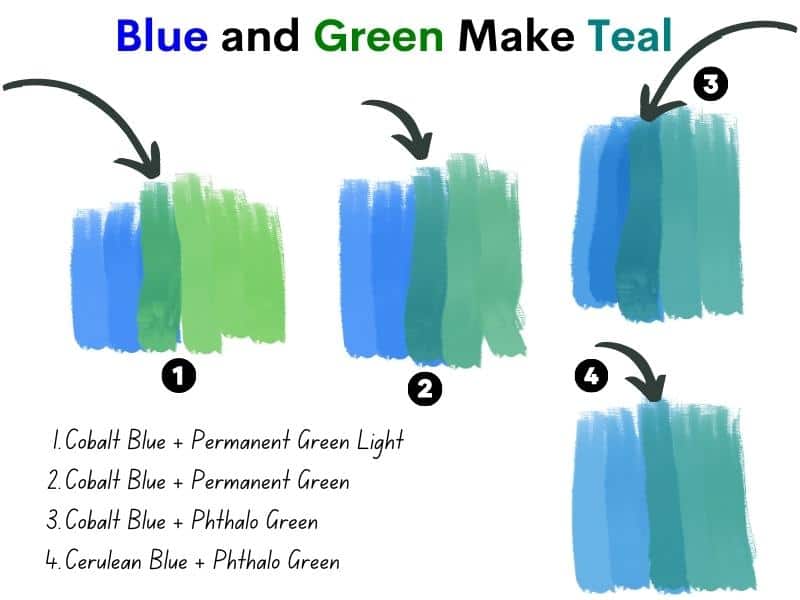
Teal is created by combining blue and green in a proportional ratio. It is a darker color with lower saturation than turquoise, which is a pale blue and green mixture.
Turquoise is a brighter color resulting from mixing a pale blue and green. Hence the lighter tone. Also, turquoise can be made by mixing a 2:1 ratio of blue to green.
So, is teal the same as turquoise or blue-green? No. Even though they all contain blue and green, teal is the darkest, while turquoise is the brightest. The blue-green color stays in the middle of them.
What are Tertiary Colors?
Tertiary colors are made by mixing a primary and a secondary color. For example, blue-green is a tertiary color resulting from mixing blue (primary color) with green (secondary color).
The six tertiary colors are blue-green, yellow-green, yellow-orange, red-orange, red-purple, and blue-purple.
The Modern Names for Tertiary Colors
People are not used to calling colors by their technical names, such as yellow-green or blue-green. In most cases, we assign names to colors. For example, blue-green might be called a darker turquoise or a softer teal.
Even though tertiary colors have technical names, they also have color names:
- Yellow-orange: Amber
- Red-orange: Vermilion
- Red-purple: Magenta
- Blue-purple: Violet
- Blue-green: Teal
- Yellow-green: Chartreuse
Types of Blue-Green
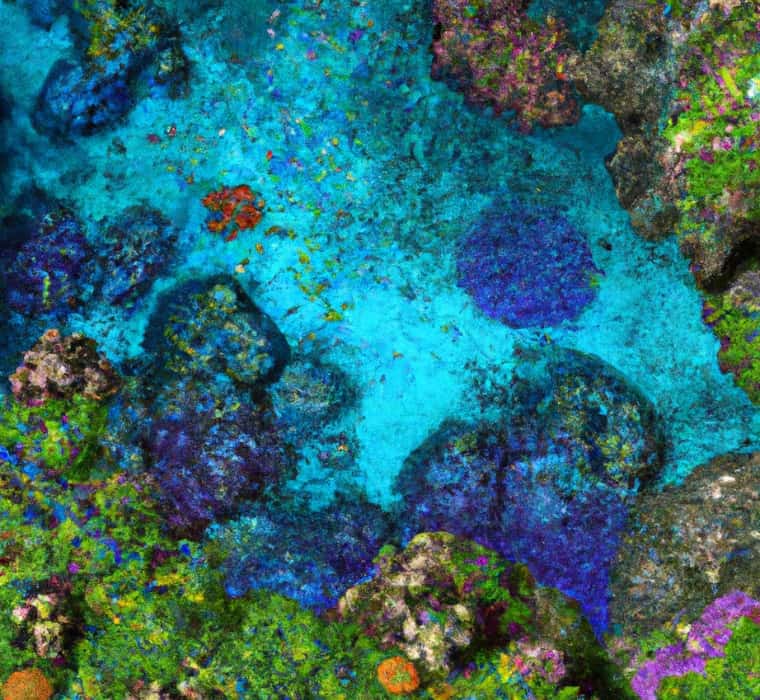
Like any color, blue-green comes in many shades. So, depending on the blue and green you use in the mix, you can get different shades or tints.
So, any mixture between blue and green is a blue-green shade, regardless of the name under which it is found.
The most popular blue-green colors include:
- Turquoise
- Cerulean
- Teal
- Cyan
- Bondi blue
- Tropical rain forest
Here’s how they look:
Cerulean #007BA7
Teal #008080
Cyan #00FFFF
Tropical rain forest #00755E
All these colors can be made by mixing blue and green together. Then you can add a little white or black to the mix.
How to Make Blue-Green Shades and Tints
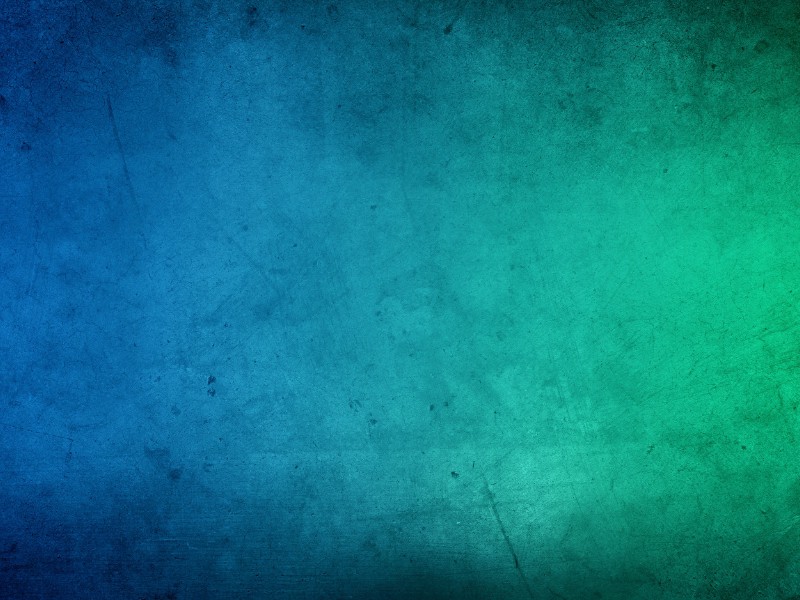
Because blue-green comes in so many shades, you may need to mix additional colors or add white or black to the mix in order to get the perfect shade. For that, here are some practical tips.
Adding More Green or Blue
If you mix blue and green in equal proportions, you get a pure blue-green or teal variations. Adding more blue paint will give you a pine green (#006C72). On the other hand, if you add more green, you’ll create fun green (#009039).
Pine green #006C72
Fun green #009039
To create a brighter blue-green, mix aquamarine blue paint with green.
Making Lighter Blue-Green
If you want to make a lighter blue-green, add a little white to the mix. You can start by adding very little white and continue until you reach a shade light enough for your needs.
Also, if you don’t want to use white, you can mix lighter shades like cyan, mint, seafoam, or sky blue.
Making Darker Blue-Green
To make blue-green darker, add black. However, be careful how much black paint you add; it is very strong, and even a little can darken your shade. Instead of adding black, you can also use burnt umber to darker the blue-green color.
The Meaning of Blue-Green
Blue-green is a nature-related color that brings to mind tropical waters.
Blue-green combines the calmness and tranquillity of blue with the freshness and harmony of green. Thus, blue-green is a calm, happy, and friendly color that radiates tranquillity.
With its calming and relaxing qualities, blue-green is associated with feelings of peace.
What Color Do Blue and Green Make When Mixing Lights?
In the world of physics and light, the RGB color model is used instead of the RYB and CMYK color models used in pigments and paints.
In contrast to the CMYK color model, which is a subtractive model, the RGB color space is an additive color model.
When you mix blue and green lights, you get cyan, which is a secondary color on the RGB color wheel. Cyan is a bright greenish-blue that sits between blue and green on the color wheel.
Moreover, cyan is also one of the primary colors of the CMYK color model.
Blue and Green Make the Same Color in the CMYK and RGB Models
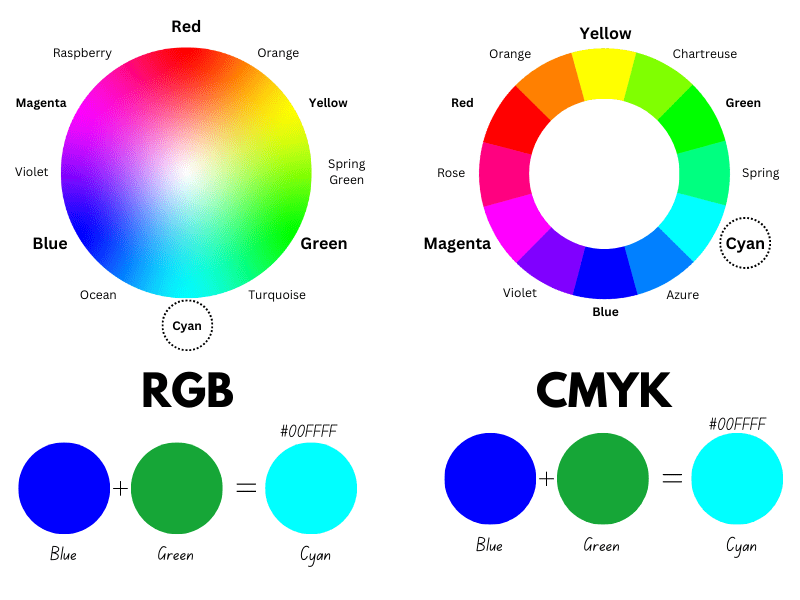
If we are talking about physics and lights, we use the RGB color wheel. When it comes to the printing industry, we use the CMYK color wheel. At the same time, we use the RYB color model when painting colors.
The RGB color model uses additive color mixing. This means that combining different amounts of red, green, and blue light produces a variety of colors that can be displayed on any digital display. But, of course, the more light added, the brighter and more saturated the resulting color.
The CMYK color model, on the other side, uses subtractive color mixing. This means that blending different amounts of cyan, magenta, yellow, and black ink produces a variety of colors.
In subtractive color mixing, “subtractive” refers to selectively absorbing or subtracting specific wavelengths of light from white light. When light shines on a colored object, the object absorbs some wavelengths of light and reflects others. The reflected light then enters our eyes and creates the perception of color.
The more ink added, the darker and more saturated the resulting color. In contrast to additive mixing, where white is the sum of all colors, white in subtractive mixing is the absence of color (no ink).
In contrast to the paint color wheel (RYB), the CMYK color wheel uses cyan, magenta, and yellow as primary colors (black representing the K or “Key” in the acronym is used to efficiency the printing process).
Thus, the RGB color wheel is an additive color model, unlike the RYB and CMYK, which are subtractive.
What are the RGB Tertiary Colors?
Tertiary colors in the RGB model are created by mixing a primary color light with a secondary color light.
Just as primary and secondary colors vary from one color model to another, so do tertiary ones.
Tertiary colors in RGB and CMYK models are spring green, chartreuse, orange, rose, violet, and azure. On the other hand, the tertiary colors in the RYB model are teal, chartreuse, vermilion, magenta, violet, and amber.
Even though teal and azure, orange and vermilion, pink and magenta, and orange and amber appear to be the same, they are not. In the case of the four colors listed above, the tertiary colors in the RGB and CMYK color models differ from the RYB model.
Unveiling the Secret: Can You Create Blue and Green by Mixing Colors?
When it comes to painting, blue and green make teal. However, in the case of light or ink, blue and green make cyan.
But what colors can be mixed to create blue or green?
In the basic color theory world, it is commonly stated that primary colors cannot be created by blending other colors.
However, we could never print blue using the CMYK color model, which uses cyan, magenta, and yellow as primary colors.
But this is not the case because blue and green can be created by mixing other colors.
For example, when mixed, magenta and cyan make blue. On the other hand, green can be created by blending cyan and yellow.
Also, green in traditional art is made by mixing blue and yellow.
Is Cyan a Type of Blue-Green?
Cyan is a color often described as a blue-green or greenish-blue color. In reality, cyan is a tint of blue-green, which means a lighter variation of blue-green.
Cyan is an inspiring and calming color that brings to mind crystal-clear waters. Moreover, it is associated with tranquility, youthfulness, freshness, and liveliness.
Cyan is sometimes confused with turquoise, another blue-green color. Turquoise is slightly greener and more saturated than cyan.
Decorating with Blue-Green: Teal or Cyan
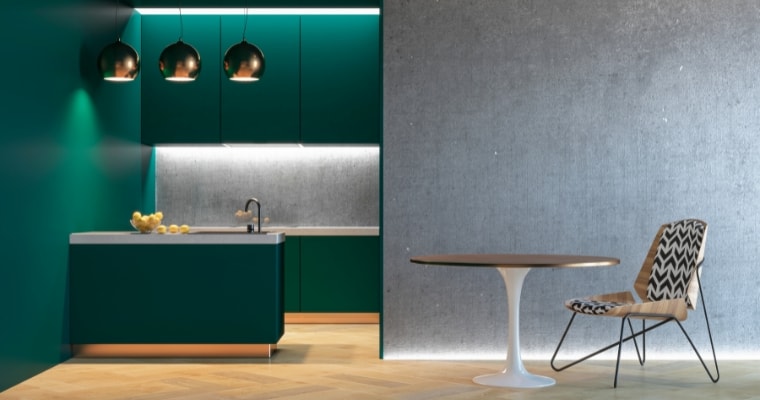
Teal or any other blue-green shade creates a welcoming and calming atmosphere in any space. The lighter the shade, the more calming the effect. For a more vibrant look, you can choose bolder shades.
Teal is located opposite vermillion on the color wheel. This means that vermillion is the complementary color to teal.
Colors that go with teal include gold, white, black, beige, charcoal grey, navy blue, mustard yellow, rose gold, and pink.
If you want a contrasting color palette, use the complementary color scheme and pair teal with vermillion – a red-orange.
Cyan is a refreshing color that creates a calm atmosphere in any design. What’s more, it can give a sense of cleanliness.
Cyan best pairs with red, its complement. Moreover, cyan goes well with yellow and magenta. If you want a more conservative look, pair cyan with deep blue or cool gray shades. On the other hand, if you want a warmer vibe, pair it with a more subdued shade of orange.
Last Words on What Color Blue and Green Make
The answer to “What do blue and green make?” is green-blue, a bright and happy color similar to teal.
In the world of light, however, combining blue and green lights creates cyan.
Depending on the color model you work in, blue and green make teal (RYB) or cyan (RGB and CMYK).
Did you enjoy this article about what color blue and green make when mixed? Then help us spread the word. Share this post with your friends who might be interested.

